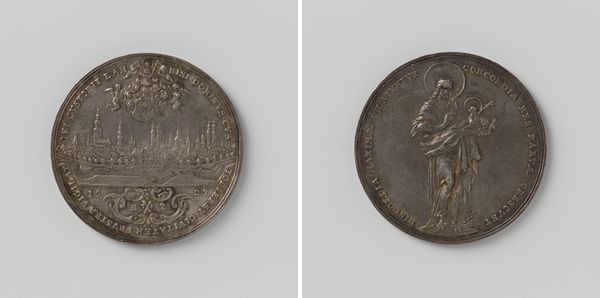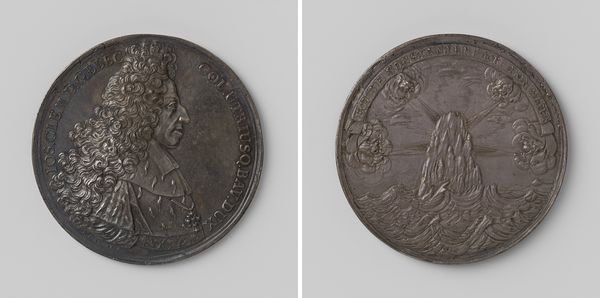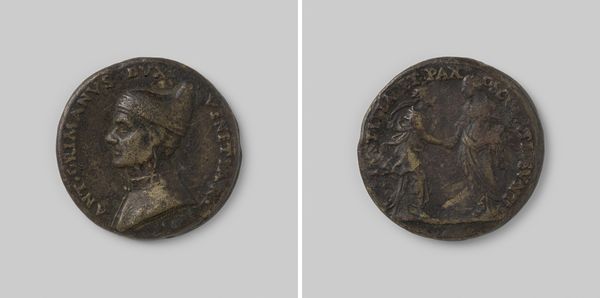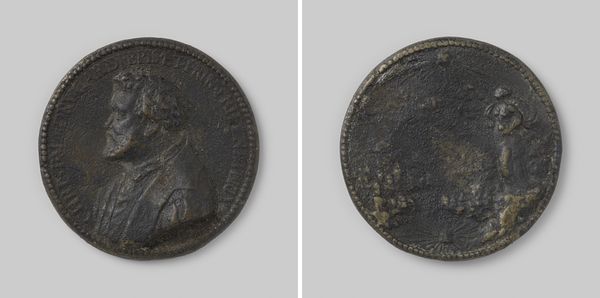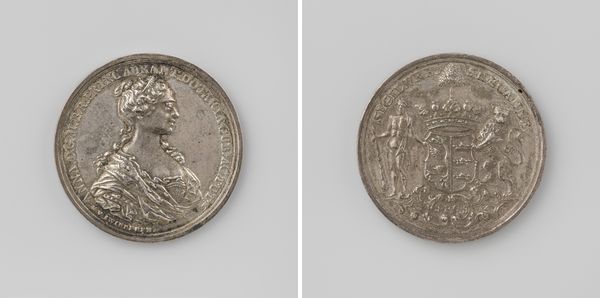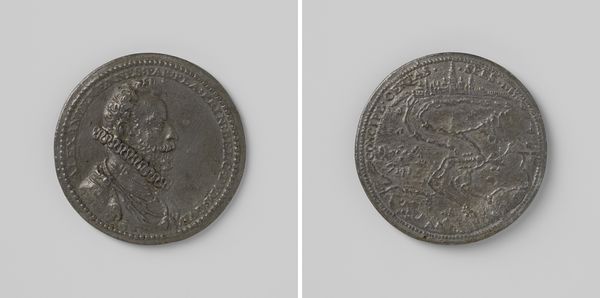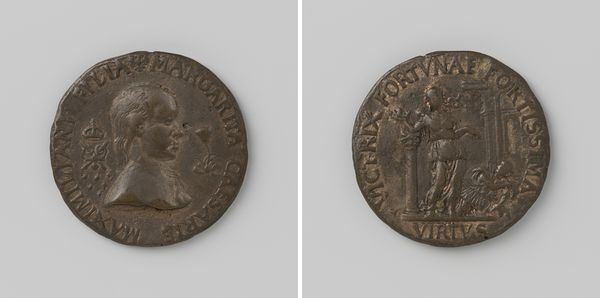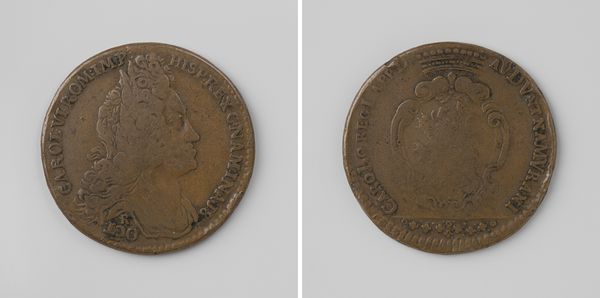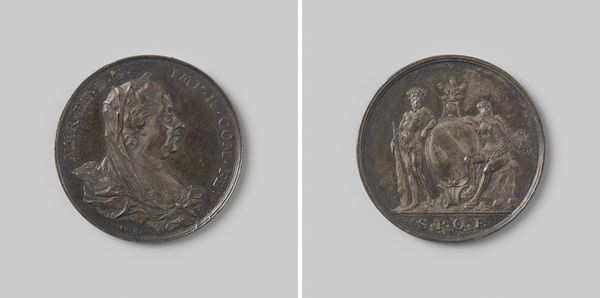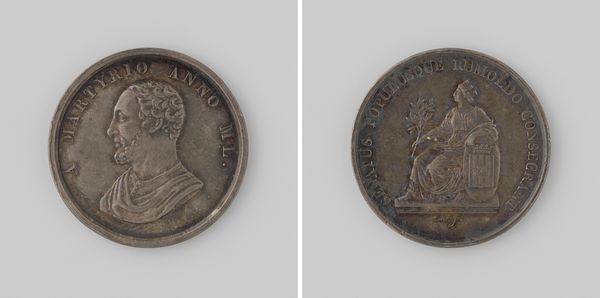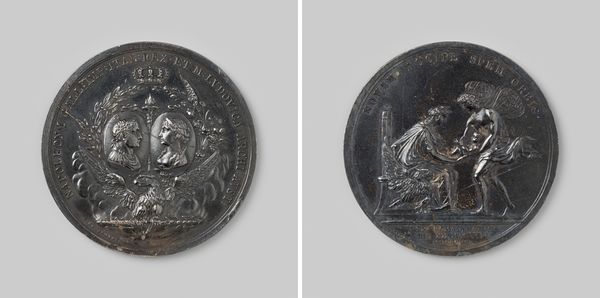
Slag bij Waterloo, draagteken uitgereikt aan korporaal Rudolph Witte, regiment husaren van de hertog van Cumberland, ter ere van prins-regent George, keurvorst van Hannover 1815
0:00
0:00
silver, metal, sculpture
#
portrait
#
neoclacissism
#
silver
#
metal
#
sculpture
#
history-painting
Dimensions: diameter 3.5 cm, weight 25.41 gr
Copyright: Rijks Museum: Open Domain
Editor: This is a silver medal from 1815, by William Wyon, commemorating the Battle of Waterloo. It seems like it's a portrait of Prince Regent George on one side, with an inscription on the other. It has a somber feel to it. What can you tell me about this medal, and what stands out to you? Curator: Well, let's think about silver as a material first. Why silver, and not bronze or gold? Silver has long been tied to currency and exchange. Considering the social context, this medal likely served a dual purpose: commemorative object and a kind of recognition—a token, almost currency-like, for service. We should consider the economic power structures and who had access to these objects. Were they widely distributed or were they for a select elite within the regiment? Editor: That makes a lot of sense. So, you're saying the material itself speaks to a system of value and reward within the military and society at the time? Curator: Precisely. It wasn't simply a gift. It was connected to the material realities of war and power, who benefits, who labours. The medal literally embodies this economic dimension of the battle through its materiality. Furthermore, thinking about Wyon's artistic process, did he create similar medals? Perhaps on a production line, in almost a factory setting? Or were each carefully handcrafted? Editor: That's fascinating; I hadn’t considered it from that angle. I was mostly focused on the imagery. It brings the idea of "war as industry" to mind, maybe in a slightly disturbing way. Curator: Exactly. Examining art objects this way reveals more than just aesthetics. We gain insights into labor, resource control, and societal values that shape art. Considering it a material object gives us a completely different context, and connects it to consumption. What does looking at the piece with the lens of materialism reveal? Editor: It encourages us to think about art and how it reflects economic systems and material processes and also about war, memory, labor, and power at the moment of production and consumption. Curator: Precisely. Now you are approaching these objects armed with additional considerations!
Comments
No comments
Be the first to comment and join the conversation on the ultimate creative platform.
